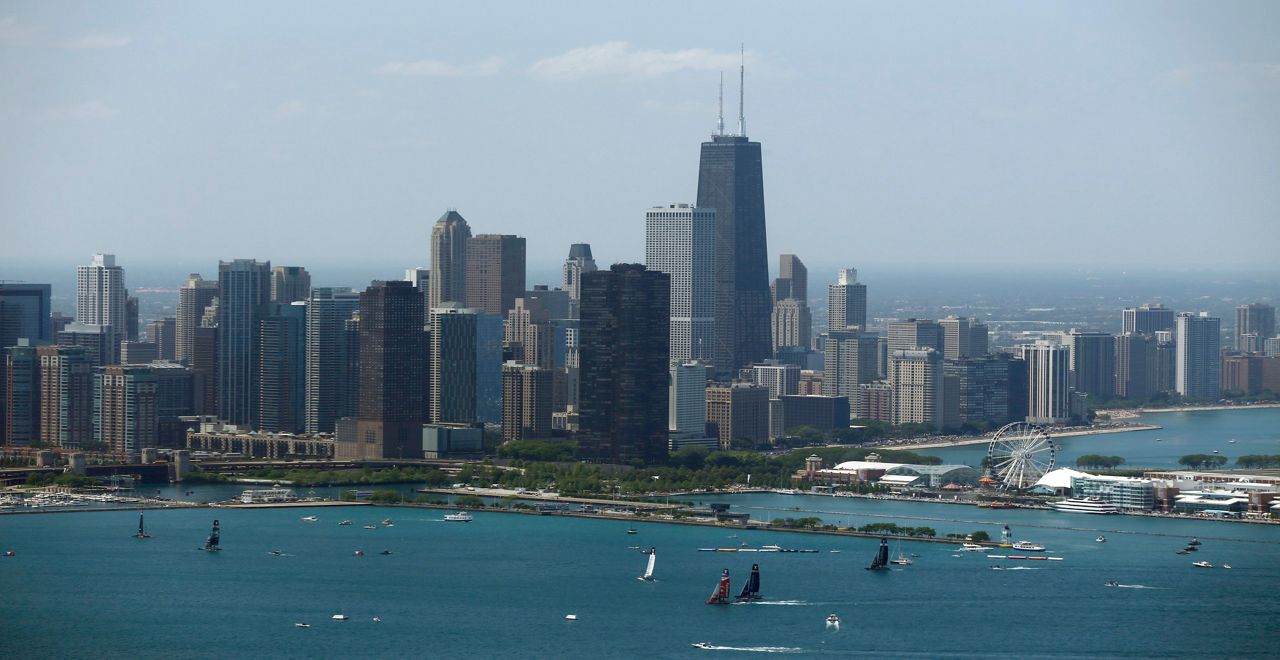WISCONSIN — After a month of respite, Wisconsin is back on Chicago’s quarantine list as the state has seen its cases rise to new heights in the past few weeks.
Chicago first announced its Emergency Travel Order back in July, directing travelers from areas with high COVID-19 rates to quarantine for two weeks after arriving in the city.
Wisconsin was originally put on the list July 29, but was removed in August after cases dipped. However, city leaders announced Tuesday that Wisconsin’s rising cases had landed it back on the list, where it joins 17 other states.
“Obviously it’s a near neighbor, and a state that has a lot of relevance for Chicago residents,” Chicago Public Health Commissioner Allison Arwady said at a Tuesday press conference. “Unfortunately, Wisconsin is currently in very poor control when it comes to COVID.”
Starting Friday at 12:01 a.m., anyone traveling into Chicago from Wisconsin has to self-quarantine for two weeks before they can be out and about in the city. Here’s what else Wisconsinites should know about the quarantine rules.
How did Wisconsin land back on the list?
The city of Chicago website explains that the order applies to states with “significant degree of community-wide spread of COVID-19.”
The metric they’re using is the number of daily cases per 100,000 residents, averaged over a seven-day period. If that number rises above 15 in a given week, the state gets added to the list until it can curb that rate again.
Last week, Wisconsin’s case rate was already above this limit and was placed on a “warning list.” According to the city website, the warning period was meant “to allow residents enough time to plan travel to this border state.”
Wisconsin didn’t get its case rate down, though: As of Tuesday, the state was averaging about 31 daily cases per 100,000 residents, according to DHS data. The seven-day positivity rate was almost 15%.
Just hours before Chicago updated its travel order, Gov. Tony Evers declared a new public health emergency and face covering order in the state.
“We continue to learn more about this virus, but what we do know is that we are facing a new and dangerous phase of the COVID-19 pandemic here in Wisconsin,” Evers said in a statement. “We are seeing an alarming increase in cases across our state, especially on campus.”
Who has to quarantine?
The rule applies to anyone who has been to Wisconsin or another designated state in the past 14 days, with some exceptions.
If you just passed through Wisconsin for less than 24 hours in their course of travel, you're exempt, including if you have a connecting flight through the state.
But if you spent time in Wisconsin within the past two weeks, you have to self-quarantine until you hit that 14-day mark, even if you passed through another state on the way. For example, if you traveled to Wisconsin and then spent four days in another state before heading to Chicago, you’d have 10 days of quarantine left when you arrive.
Commuters who live in Wisconsin but travel to Chicago for work are exempt, as are Chicago residents who have to travel to Wisconsin for essential work. However, workers should only be commuting if their jobs can’t be performed remotely, and should be able to provide identification from their employers, the website says.
Even though essential workers don’t have to completely self-quarantine, they should still avoid public spaces and congregate settings as much as possible, in addition to closely monitoring their temperatures and potential symptoms.
Other exceptions can be made for people who need to cross the border to get medical care, or in cases of parental shared custody. Plus, the order only applies within the Chicago city limits, and doesn’t affect other parts of the county or state.
What does self-quarantine look like?
Basically: Staying home completely. The guidelines say if you’re self-quarantining, you should only leave home to seek medical care or get a COVID-19 test. Otherwise, you should be staying put — including getting food and other supplies delivered.
If you live in a household with others who haven’t traveled recently, you should also be trying to distance within the home, sticking to a separate bedroom and, if possible, bathroom.
The 14-day quarantine has to be kept even if you display no COVID-19 symptoms, or if you get tested and receive a negative result.
How will these rules be enforced?
Anyone who violates the quarantine rules could be fined between $100 and $500 per day, according to the city’s guidelines. The maximum total fine is $7,000.
But Arwady said Tuesday that the orders are “primarily focused on education” rather than penalizing travelers. She says they've been "very successful" in encouraging people to change their travel plans, and though the department has issued some warning letters and can follow up with fines, they aren’t concentrating their resources on enforcement.
“I hope that when people see this news about Wisconsin, they think twice about going to Wisconsin right now,” Arwady said. “This is about the risk for someone who’s traveling, and the risk that they bring it back to Chicago.”
Some business owners worried the first time Wisconsin was placed on the list that the order could deter customers from coming across the border, creating another burden for tourist spots — like Wisconsin's iconic Mars Cheese Castle — that have already been hit hard by the pandemic.
“If everybody from Chicago stopped coming here, we would take a massive hit,” the business’s general manager, Michael Ventura, told Spectrum News 1. “I would be worried how long we could survive.”
Chicago will continue to evaluate the states on the quarantine list every Tuesday, according to the city website, with any changes going into effect the following Friday.



